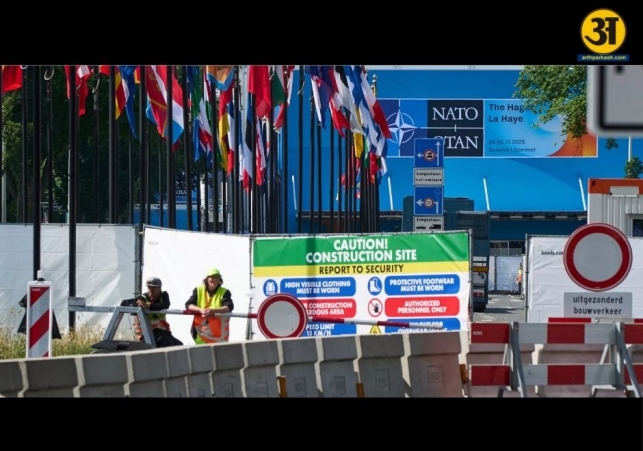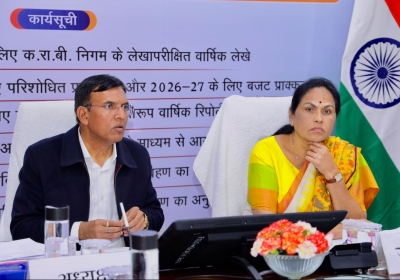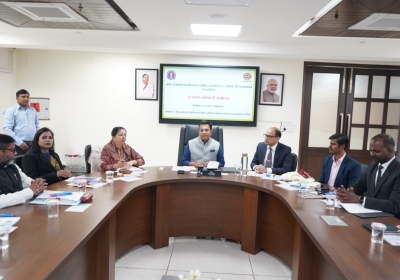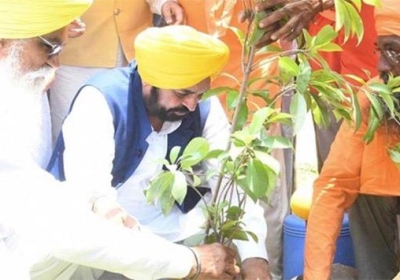
NATO summit eyes spending, Iran looms
Hague NATO summit to push Trump’s defence spending target amid Iran tensions
- By Gurmehar --
- Monday, 23 Jun, 2025
A NATO summit being held in The Hague this week has been carefully shaped to meet U.S. President Donald Trump’s top demand—increased defence spending by allies. NATO leaders are prepared to agree on a new target of spending 5% of their GDP on defence and related security, up from the earlier 2% goal. However, the summit’s focus may be quickly diverted due to recent U.S. military strikes on Iran, creating uncertainty and tension among member states.
The two-day event is not just about budgets. It also serves as a message to Russian President Vladimir Putin: NATO is united and ready. Still, divisions remain. While European members are focused on threats from Russia, Trump’s recent actions in Iran have raised concerns about the summit becoming sidetracked.
Bigger defence spending target
Under the new proposed agreement, NATO members would spend:
-
3.5% of GDP on core defence, which includes weapons, troops, and military infrastructure.
-
1.5% of GDP on related security investments like cyber defence, protecting pipelines, and ensuring military mobility through roads and bridges.
The plan is to phase this increase over 10 years, resulting in hundreds of billions of extra dollars in defence budgets. Currently, NATO members collectively spend about 2.6% of GDP on defence, according to 2024 estimates. Of that, the U.S. contributes the most—nearly $818 billion of a total $1.3 trillion.
Trump has long argued that Europe should shoulder more of its own defence responsibilities. His demand for a 5% defence spending target is seen by many as his way of holding NATO accountable for what he sees as U.S. over-contribution.
However, the path to consensus isn’t smooth. Spain’s Prime Minister Pedro Sanchez has openly stated that Spain won’t fully commit to the 5% target, even though it will support the summit’s final statement. His comments have unsettled NATO Secretary General Mark Rutte, who is hosting the summit in his hometown, The Hague.
Meanwhile, Ukrainian President Volodymyr Zelenskiy has not been invited for a formal session with leaders. Instead, he will attend only a pre-summit dinner, reflecting the tense relationship between Ukraine and Trump.
The summit’s carefully curated agenda is at risk of being overshadowed by Trump’s recent airstrikes on Iran’s nuclear sites. The military action came just days before the summit, and NATO leaders now fear Iran may retaliate—raising security concerns not only in the Middle East but also for NATO as a whole.
Depending on the developments during the summit, discussions could shift from defence budgets to crisis management, especially if Iran responds to the U.S. attacks during or just after the event.
NATO wants to present a unified front, especially with Russia growing more aggressive. However, the Iran conflict could expose internal divisions about foreign policy priorities and how aligned the alliance remains under Trump’s leadership.
NATO's Russia dilemma
Trump has often expressed a wish to build better ties with Russia, unlike most European leaders who see Russia as a major military threat. Many Europeans are nervous that Trump’s desire to reduce Russia’s diplomatic isolation could weaken the West’s united front against Moscow.
Diplomats say the final summit statement will only briefly mention Russia as a threat, and will also include a single line about support for Ukraine. Topics such as troop presence in Eastern Europe, future NATO enlargement, or sanctions on Russia have been intentionally kept off the main agenda to avoid conflict with Trump.
Despite disagreements, NATO officials insist the alliance remains strong. A draft statement seen by Reuters reaffirms NATO’s core principle—Article 5, which promises collective defence: an attack on one member is an attack on all. This article has been the foundation of NATO since its formation in 1949.
European leaders are walking a fine line. On one hand, they are eager to increase defence budgets to show seriousness. On the other hand, they want a gradual shift so they can build up their capabilities without leaving gaps that adversaries like Russia could exploit.
Another worry is that Trump could reduce U.S. troop levels in Europe if he feels NATO isn’t doing enough. Past comments from Trump suggest he may not want to protect allies who, in his view, don’t spend enough on defence.
ALSO READ: Technical glitch halts IndiGo Flight in Chandigarh; passengers deplaned before takeoff
ALSO READ: CCTV surveillance reveals daily chaos on Mohali roads with 1,935 challans issued
To avoid that, the current summit has been deliberately brief, and controversial issues have been avoided. Leaders are instead focusing on Trump’s demand for higher spending to keep him onside ahead of the U.S. presidential election campaign.
The 5% GDP spending goal, if fully adopted, would mark a significant shift in NATO’s priorities and budget allocations. While this may please Washington, especially Trump, it also places huge financial pressure on smaller NATO members.
Moreover, with the Middle East situation unstable, the success of the summit may depend less on what leaders plan and more on what happens next between Iran and the U.S.
The Hague NATO summit was designed to show unity and respond to President Trump’s demands for increased defence spending. But rising tensions with Iran and divisions over how to handle Russia may complicate those goals. As leaders gather, they face the challenge of reassuring Trump while holding the alliance together in a complex and uncertain global environment.





